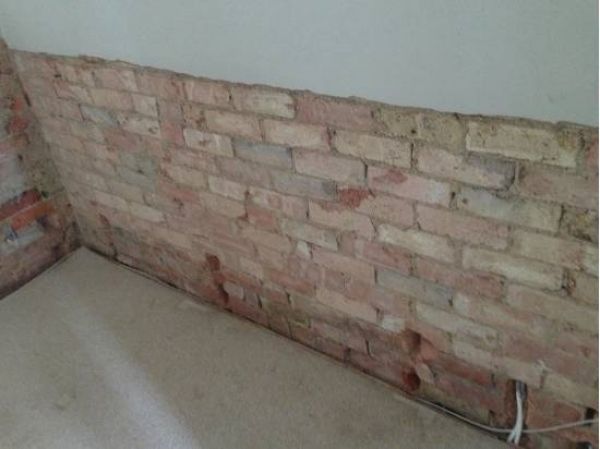How to spot rising damp
Dampness, mould growth and staining will be visible along the lower part of the external or internal wall. Internally damp will be seen approximately one metre above the ground floor level damp proof course (blistering of plaster wall finishes or disruption to the wallpaper will be obvious signs). A CSRT member will be able to ascertain if the damp is true rising damp or from another source such as condensation or penetrating damp.
How can I get rid of it?
If a damp proof course has failed, the damp affected plaster can be removed and replaced in the section that has failed. If a property does not have a damp proof course, one can be introduced by a professional who can inject the walls, the chemicals injected will be absorbed and form an impervious barrier.
It is necessary with this process to ensure all internal plaster from the affected walls is removed before the damp proof course is introduced. By means of drilling and injecting the solution into the mortar beds at low level, the solution will level and dry into the mortar bed forming a barrier against future damp problems. Once the walls have been treated a new sand and cement render with a waterproofer will be applied internally. The walls will be finished with skim plaster.
Why does the plaster have to be removed?
The new damp proof course will prevent moisture rising and the masonry will begin to gradually dry out, however due to the effects of ground salts, the plaster to the damp affected walls will have become hygroscopic and will continue to be damp and that is why the existing plaster is removed.
Why does the plaster have to be removed?
The new damp proof course will prevent moisture rising and the masonry will begin to gradually dry out, however due to the effects of ground salts, the plaster to the damp affected walls will have become hygroscopic and will continue to be damp and that is why the existing plaster is removed.
abc
abc

